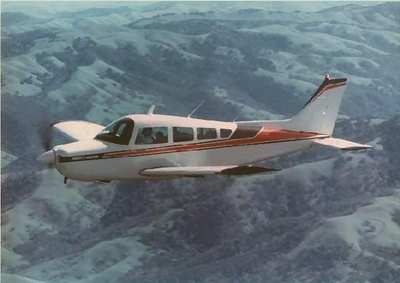Plane Went Down Shortly After Departure From Henderson Executive Airport
The NTSB has released a preliminary report from an accident which occurred September 7 involving a Beechcraft C24R (Sierra) which fatally injured two people and seriously injured two others aboard the aircraft.

According to the report, the aircraft impacted a divided roadway during a return to the airport shortly after takeoff, about a 1/4 mile from the departure end of runway 17R at the Henderson Executive Airport (KHND), Las Vegas, Nevada. The pilot receiving instruction and the flight instructor were fatally injured and the two passengers had serious injuries. The airplane was destroyed. The airplane was registered to a So Cal Leasing LLC, and operated by the California Flight Academy as an instructional flight. Visual meteorological conditions prevailed for the flight and an instrument flight rules flight plan was filed for the cross-country flight. The flight was destined for Gillespie Field Airport (KSEE), San Diego/El Cajon, California.
An eyewitness that was located at the north end of the airport, was monitoring the tower frequency with a handheld radio. He saw the accident airplane taxi near his location and perform a run-up; all while the passenger door was open. The airplane's engine sounded normal during the run-up and the left entry door was closed prior to obtaining takeoff clearance and entering the runway. The eyewitness reported that the airplane appeared to roll down the runway about 500-600 ft with about 50% power, before full power was applied and lifting off the runway. The airplane climbed to about 50 to 100 ft above ground level and appeared to struggle to gain altitude; climbing a few feet and then descending. The eyewitness heard the pilot on his radio report to the tower that a door had opened and requested to return to land. The airplane then appeared to climb about another 50 to 100 ft, and then initiated a left turn. Subsequently, the airplane entered a nose down left bank and impacted the terrain.
According to the operator, the accident airplane was used as an instructional flight and to transport a mechanic and an additional pilot from KSEE to KHND to repair and return a company airplane back to KSEE. When the other company airplane could not be repaired, all four then planned to return in the accident airplane that morning. When the first flight was unsuccessful at getting over the mountains during departure, a second attempt to depart KHND was performed later that night.
Airport employees reported that the accident airplane arrived at KHND around 0800 and parked at the transient parking for about 1-1/2 hours. A fuel request came in and the airplane was refueled to about 1.5 inches from the fueling ports, a little more than halfway up the fuel tank tabs. A total of 23 gallons of fuel was added to the airplane. Shortly after refueling, four individuals were aboard the airplane when it departed HND and returned minutes later to the transient parking area. An occupant on that flight stated to one of the airport employees that it was too hot and that the airplane couldn't climb to get around the mountains.
Examination of the accident site revealed that the airplane impacted a divided roadway, slid through a steel barrier fence, and came to rest in a culvert drainage area. The empennage separated from the main wreckage just aft of the baggage door area and was found adjacent to the culvert entrance. The main wreckage was partially consumed by post-impact fire. The cabin area and the wing's inboard sections, including the wing fuel tanks were mostly consumed by post-impact fire. The wreckage was relocated to a secured facility for further examination.
(Source: NTSB. Image from file. Not accident airplane)
 ANN's Daily Aero-Linx (05.02.24)
ANN's Daily Aero-Linx (05.02.24) ANN's Daily Aero-Term (05.02.24): Touchdown Zone Lighting
ANN's Daily Aero-Term (05.02.24): Touchdown Zone Lighting Aero-News: Quote of the Day (05.02.24)
Aero-News: Quote of the Day (05.02.24) ANN FAQ: Contributing To Aero-TV
ANN FAQ: Contributing To Aero-TV NTSB Final Report: Cirrus Design Corp SR20
NTSB Final Report: Cirrus Design Corp SR20



